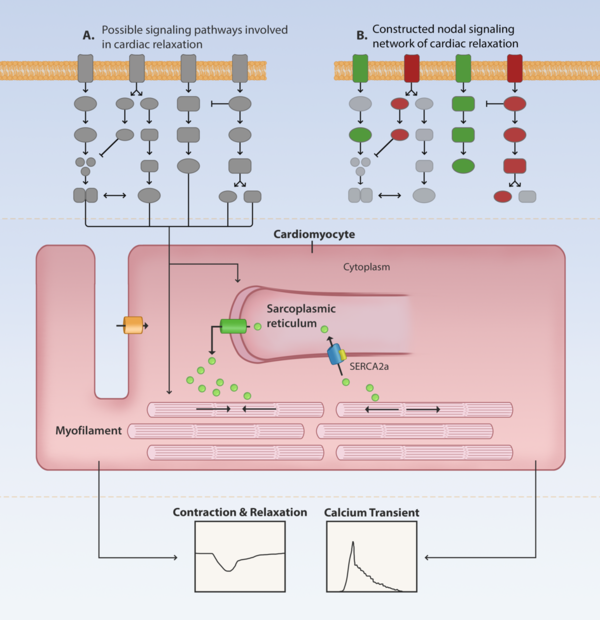The power of numbers: understanding cardiac relaxation
The heart’s ability to supply our body with sufficient amount of blood depends both on its contractile strength and the ability to relax to allow filling. It is now recognised that >50% of all heart failure patients present with impaired muscle relaxation while contractility is maintained. Impaired relaxation does not only affect heart failure patients as patients with the most common inherited cardiac disease, hypertrophic cardiomyopathy (HCM) (disease onset 20-50 years), also show impaired relaxation with normal contractile function. For both patient groups there are no effective therapies to increase relaxation. This is largely due to the limited understanding of signaling pathways that modulate relaxation.
Studying full signaling pathways in a physiologically relevant models has been hampered by the low throughput of existing experimental methods. This will be addressed by bringing in use of a revolutionary new high throughput – high content measuring system for cardiomyocyte research that will increase the daily output by two orders of magnitude.
This gain will be used in throughput to systematically study the signaling events that mediate cardiac relaxation by performing a screening of compounds in adult myocytes isolated from two rodent models of HFpEF and HCM. Compounds will be selected that target a wide variety of signaling molecules. This will enable to build nodal signaling networks of the regulation of contraction. A functional drug interaction network will be build by incubating cardiomyocytes with drug combination of hits from the screen with drugs that are currently used in the patients.
A systematic understanding of cardiac relaxation will be obtained and new and important signaling hubs to target for future therapy will be found.



